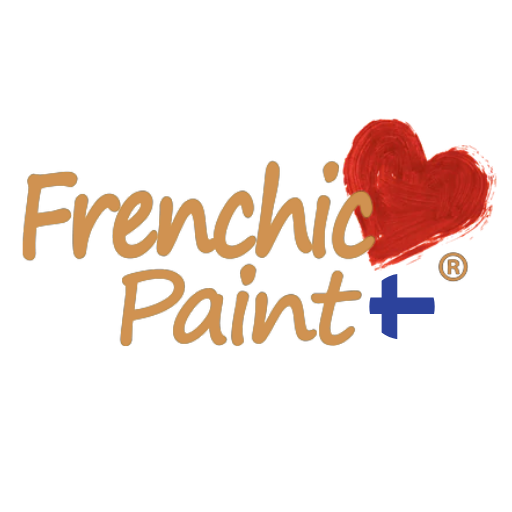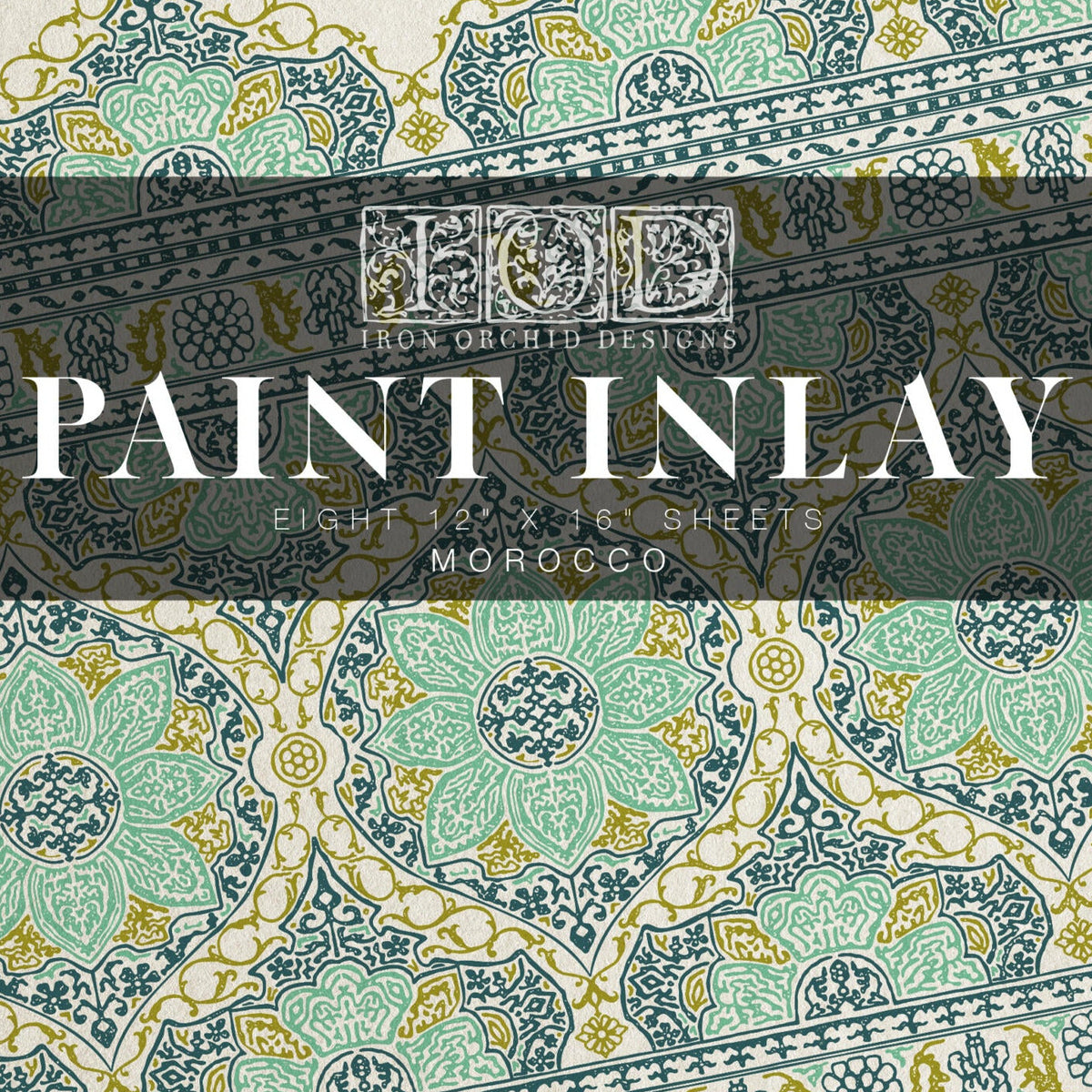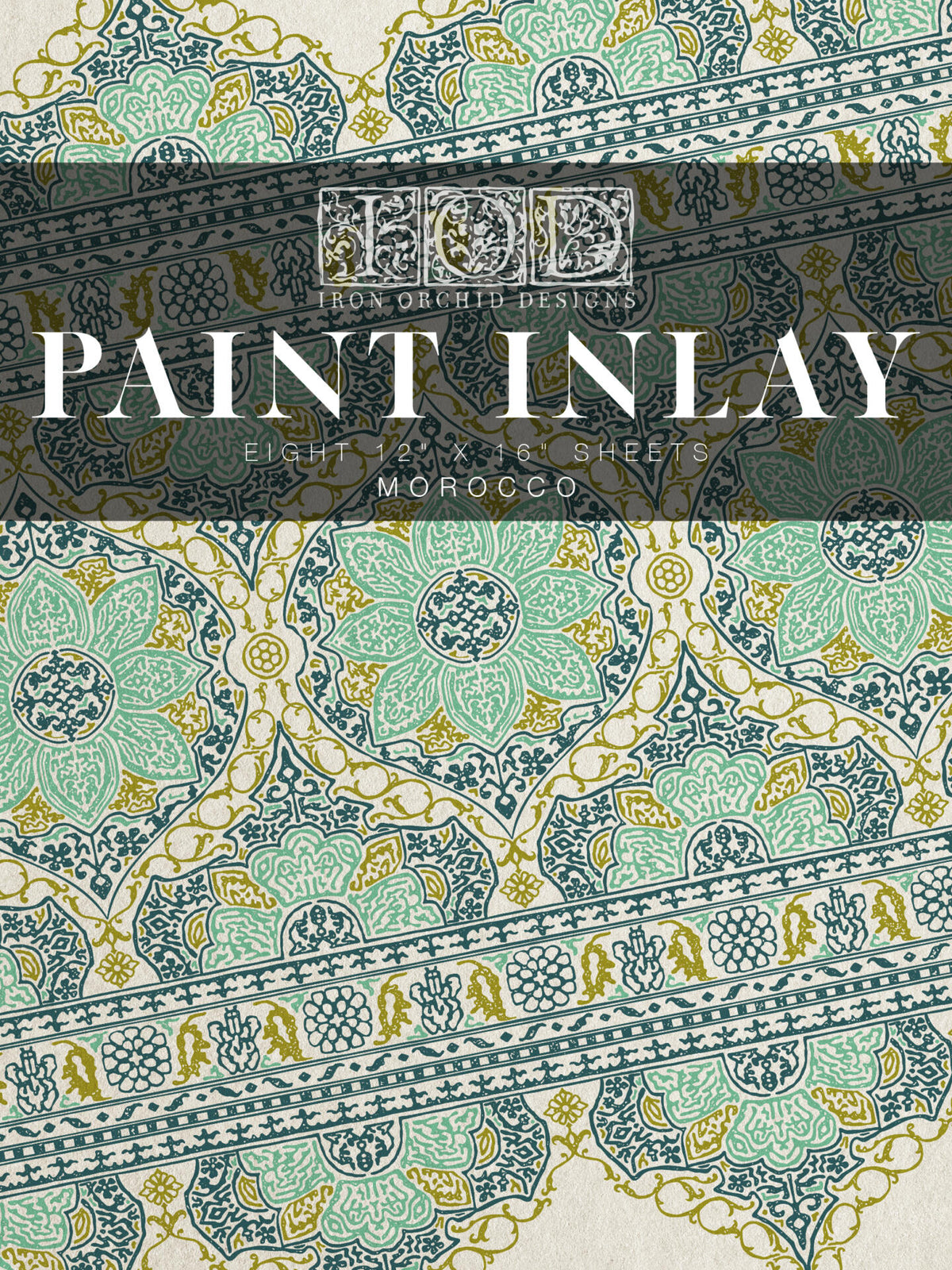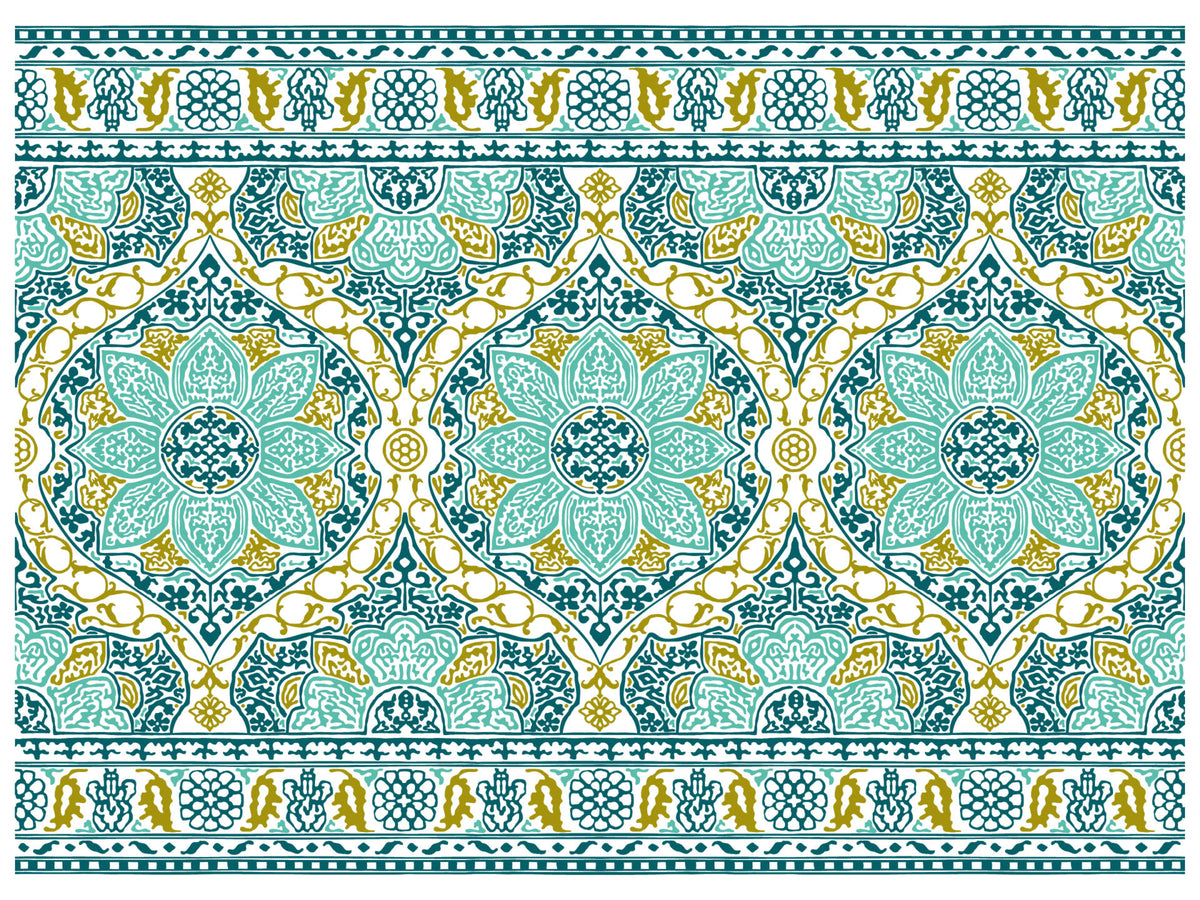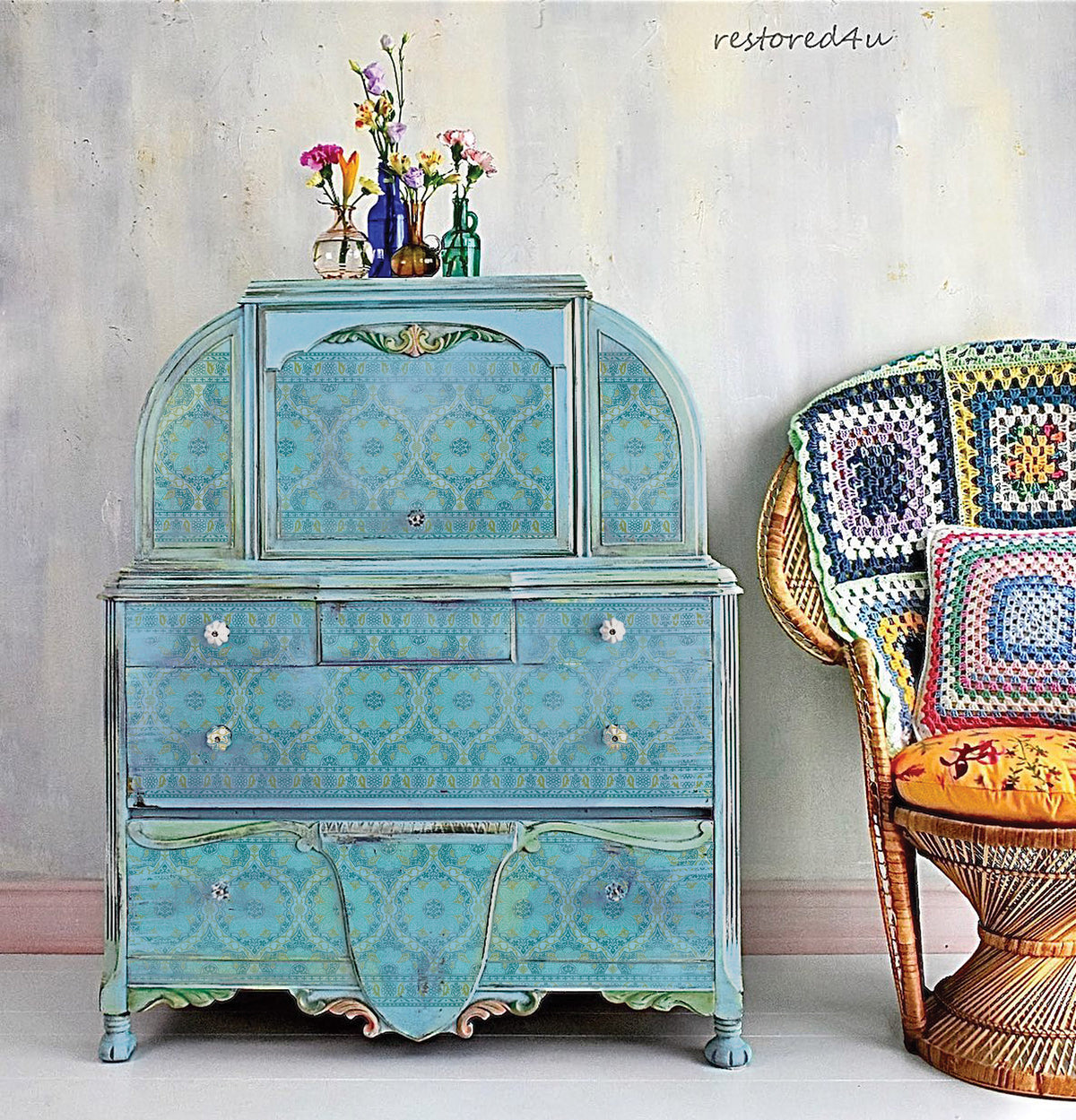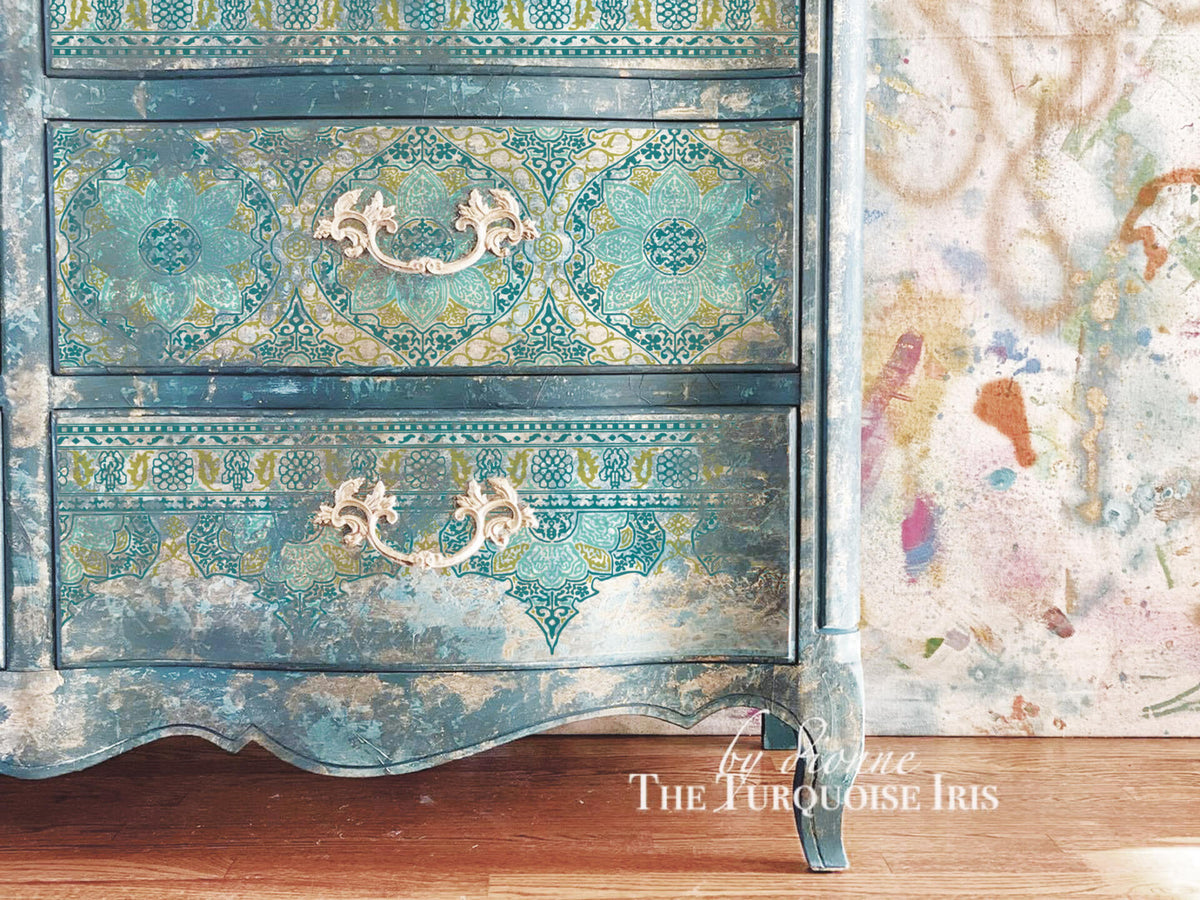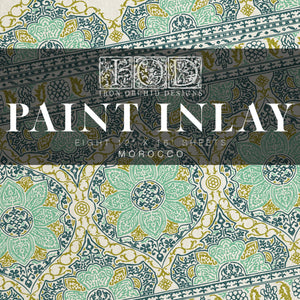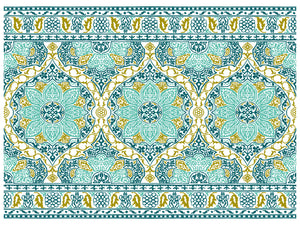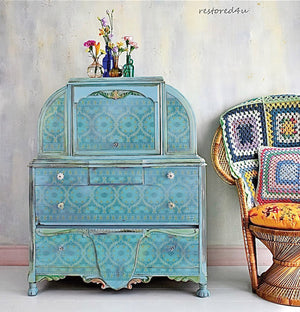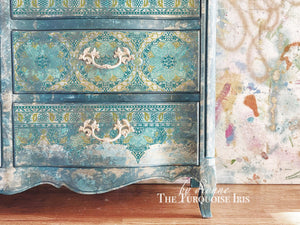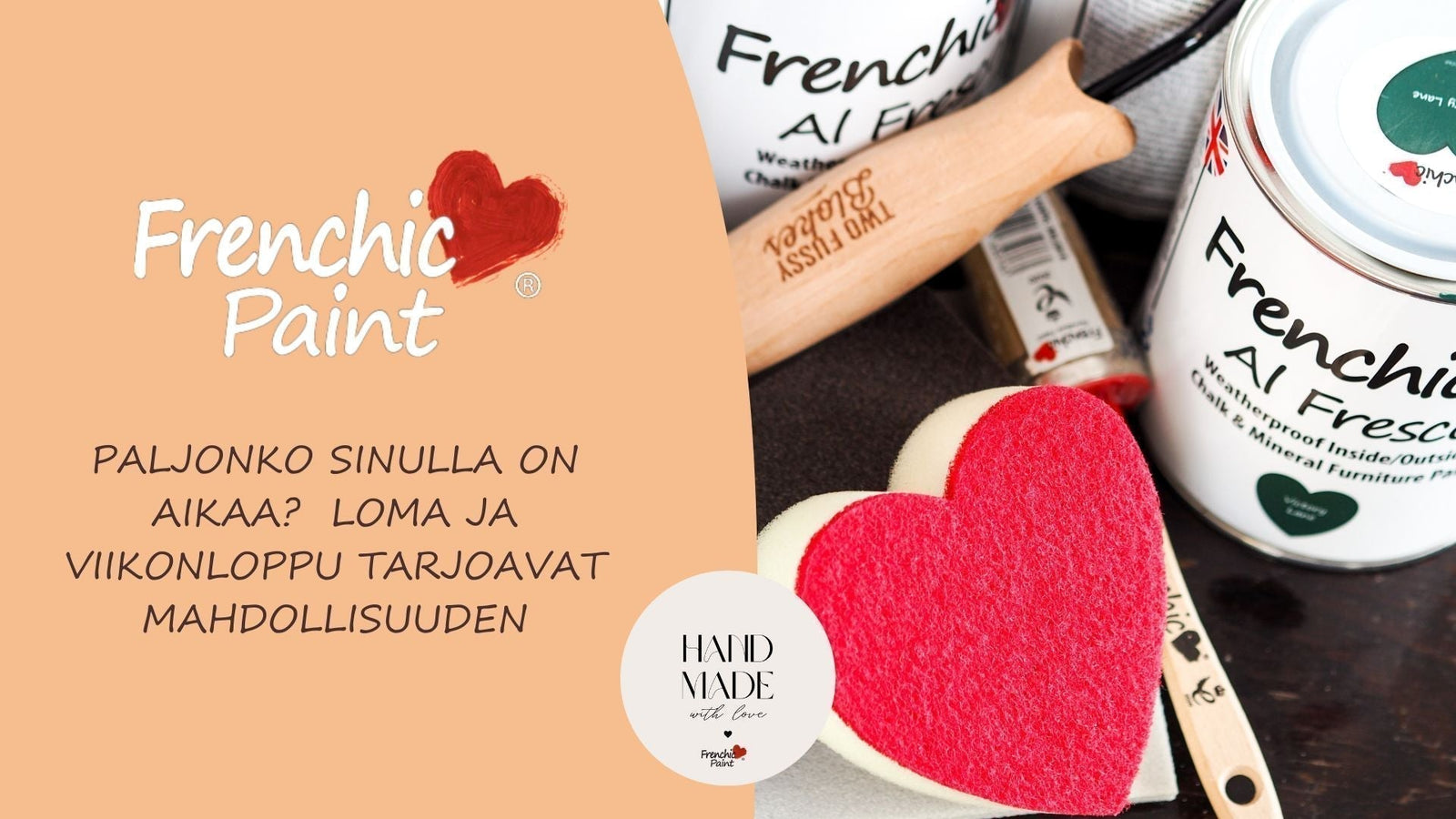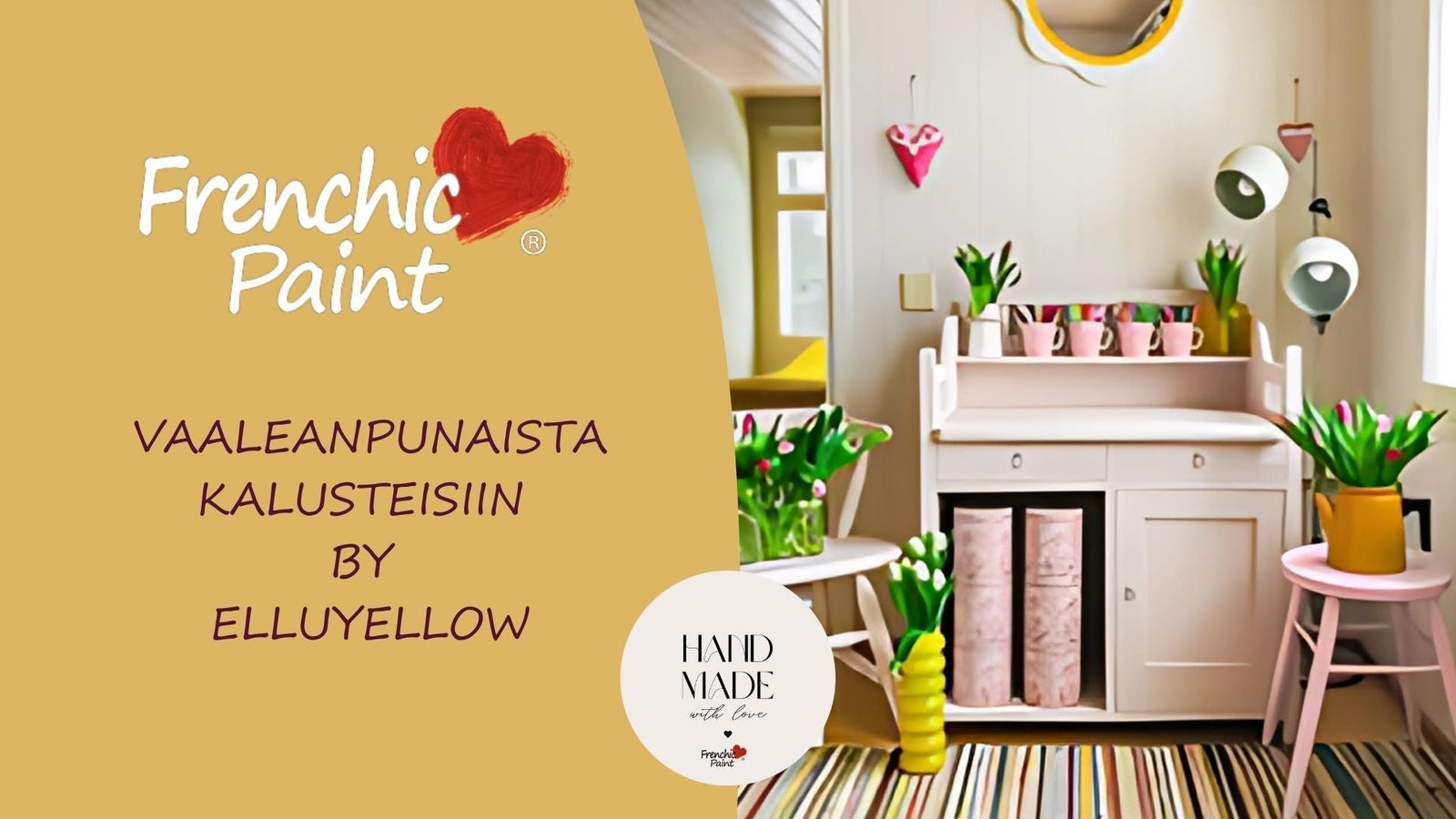Morocco - Paint Inlay
IOD Paint Inlays sheets are handmade from real paint. They are not stickers, they are not synthetic film, they are not decoupage.
With this technique, you get anything but smooth and even, perfect reproduction - and therein lies the secret to the popularity of Paint Inlay sheets!
The pattern is transferred from the Paint Inlay sheet to the wet paint, each transfer is always unique.
You can use one sheet 2-4 times, each time the pattern repeats itself more and more, and the end result is beautiful, textured patterns.
We recommend Original Artisan or Lazy Range paints.
Paint Inlays are made to work with traditional whitewash paints.
Other paints can also be used, but the working time will vary.
If you choose a different brand or series for the paint, first try how the pattern transfers before starting a larger project.
When you use IOD Paint Inlay, the paint of the pattern is physically embedded into the surface of the project.
After drying, the paper is removed, leaving the object/surface with an authentic painted pattern and a textured, almost leather-like surface.
IOD Paint Inlays are made from artist-grade paints that are specifically developed for decorative use.
Organic in nature, Paint Inlays transfer the painted pattern, giving a slightly varying and uniquely beautiful aesthetic every time they are used.
The results are visually interesting, structurally complex.
The paint is "active" until it is finished with a topcoat.
This means you can work with it and use special techniques or custom touches before you seal your piece - so you can still paint designs with a brush yourself!
The paint on the patterns is active in water until it is sealed.
Also read the Work Instructions and Pattern Protection tabs below.
The package includes instructions in English.
Work instructions Paint Inlany
How do I use IOD Paint Inlays sheets?
Step 1: Plan the layout of your patterns for the surface.
Step 2: Using the grids on the back of the inlay sheet, cut as needed and set aside. If using a repeating pattern and lining up the pattern continuously, cut off the excess margin from each sheet.
Step 3: Apply a generous and even coat of mineral-based lime paint to the properly prepared surface. Work in small sections, usually no larger than 30x30cm/or sheet size, to control the paint's drying window as you work.
Step 4: While the paint is still wet, place the sheet pattern side down (the back has grids printed on it to make it easy to tell the front and back apart) into the wet paint and smooth it out, but avoid moving the sheet in the wet paint.
Step 5: Lightly mist the sheet with a steady stream of water. Use a smooth damp sponge, soft folded cloth, or small IOD Silicone Paint Blade and pat evenly with light pressure to ensure good contact of the design with the painted surface. Avoid excessive movement or dragging of the Paint Inlay once it is in place as this may cause blurring or smudging.
Step 6: Repeat steps 3-5 to finish the pattern and align the sections as needed. Grid lines will help you align the edges of the pattern if necessary.
Step 7: Allow the Inlay pattern to dry. Drying time can vary from 10 minutes to an hour depending on conditions. Paper sprayed wet will lighten as it dries.
Step 8: When you are ready to remove the Paint Inlays from the surface, spray water again evenly and let it soak for 30 seconds; this will help loosen the pattern. Gently pull the paper upwards starting at one corner and holding it at a low angle. It should come off easily without tearing. If not, spray again, wait a moment, then try again.
Step 9: You can fade or soften the design with water if you want, as the pigment is still mobile and active. You can even add additional colors.
Step 10: Once you are satisfied with your Paint Inlay design, allow your project to dry completely. Drying time will vary depending on the thickness of the paint layers, the amount of water used in the process, the room temperature, and weather conditions. If the surface feels cold, it is not completely dry. To be safe, wait 24 hours.
Step 11: Now it's time to finish the surface with a coating.
Paint Inlay Pattern Protection
There are a few different options for finishing:
Spray your desired water-based sealant with a spray gun designed for paints and surface treatments, add a finishing coat, for example, from the spray bottle.
Lightly apply a brushable water-based polyurethane type sealer, varnish or epoxy directly onto the work. This method is likely to result in some pigment transfer; this is minimized by avoiding over-application.
Create a "sprayable" fixing spray using a 50/50 mix of water and your favorite water-based sealant. Apply with a fine mist sprayer. Let it dry completely, then apply a brushable sealant.
First, prime your work with a commercially available spray sealer or artist's sealer. Let it dry completely and apply your desired finish.
You can also use wax to seal your work. Apply according to the manufacturer's instructions and polish to a shine as usual.
Some oil-based finishes can be applied directly to the surface with a brush without reactivation. Test on a small area before applying. Please note that most oil-based finishes have a tendency to turn amber over time, and this is most noticeable on light colors.
IMPORTANT NOTE: Always check sealant/finishing product compatibility when using more than one product.
